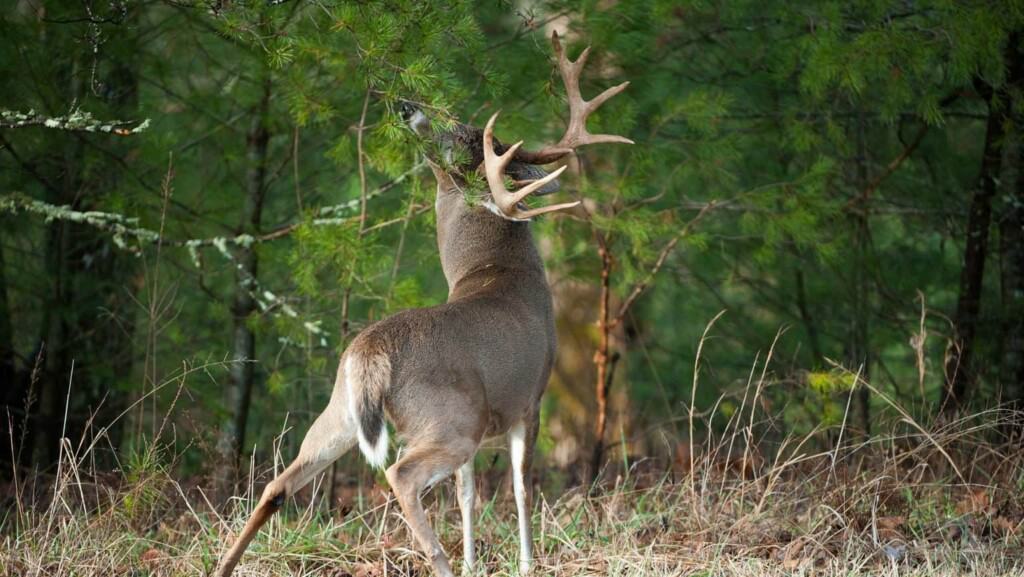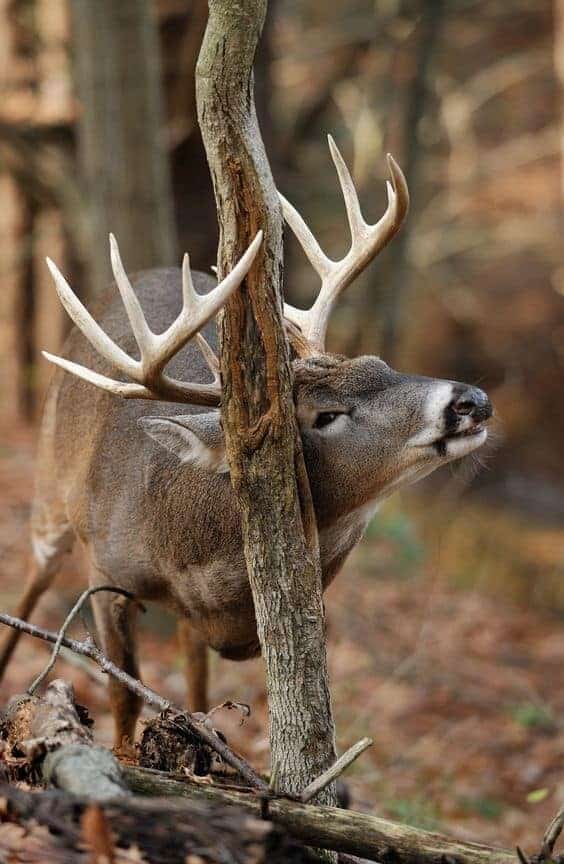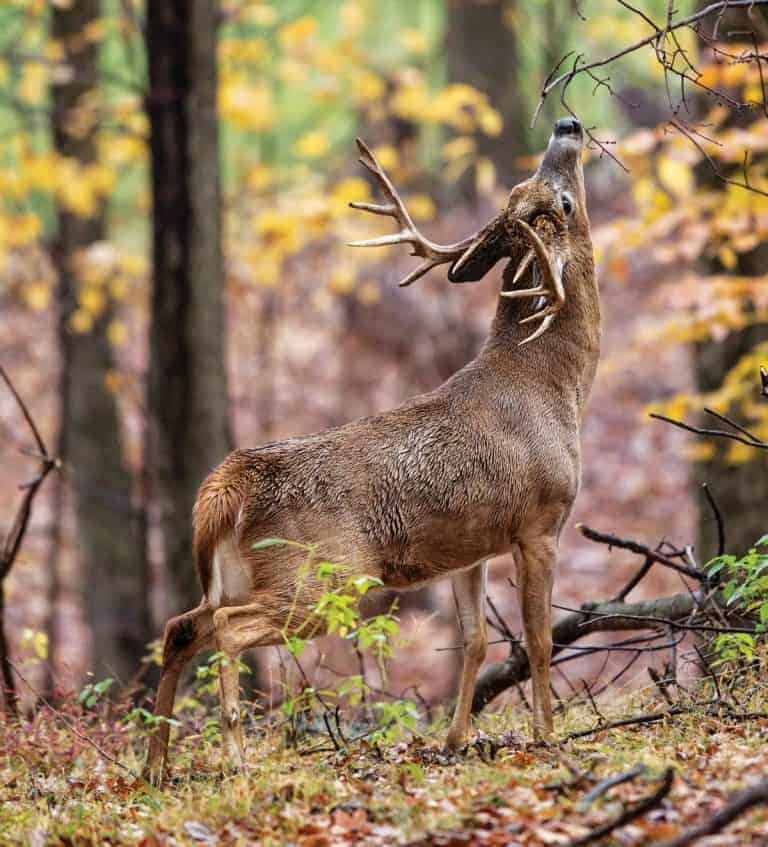Every hunter has their own opinion or thing that works best for them. The debate on whether scrapes or rubs are better to hunt is just another one of those debates with no right answer. I started looking for the answer to this burning question, only to find big-name hunters and organizations all saying something different. The fact is, you should hunt where the deer are. Go figure right? That is why scrapes and rubs are so important, oftentimes, bucks return time and time again to these areas to keep reapplying their scent to them. This is where we can take advantage of their habitual behavior and bag the biggest buck on the property. However, the question still remains, is it better to hunt scrapes or rubs?
Personally, there is never a right or wrong place to hunt. There are too many factors out of our control while hunting, but hunting along rub and scrape lines is definitely a good strategy that you should try out. As for which one is better, I say why not try both? As long as you are picking hunting spots with fresh sign and not hunting over scrapes or rubs that have not been hit in a year, then you will probably see deer. In both cases, you have to overcome the nocturnal nature of mature bucks. Some people claim to be able to control this, but there is not a lot that the average hunter can do about when deer sleep. Every property is different, and every deer is different. So try out both options, or do my favorite option, hunt somewhere that has both!
RELATED POST: WHY DO BUCKS RUB TREES?
What Is a Scrape?
A scrape is a small circular area around some sort of hanging limb that deer will travel to and spread their scent in. After a deer comes to the scrape and smells who else has been by, he starts to leave his own scent. They do this by pawing at the ground and uncovering the bare soil underneath and then urinating in it. They then rub their faces on the overhanging limb. By doing this, it spreads their scent from their nasal, preorbital, and forehead glands onto the branch.
After they rub their scent, other deer are able to tell that they were there. It is basically like signing your name on a sign and saying “Hey, I’m here.” Scrapes are extremely social areas. We see bucks, does, and even fawns use scrapes on a regular basis. The frequency deer use scrapes can vary greatly. Some deer visit a scrape every day while others may visit once a month. This is why it is important to scout scrapes and know who is in the area.
It is worth setting up a trail camera around a scrape that you believe to be active to make sure bucks are visiting during daylight hours. A lot of times when bucks make any type of sign, it is at night. You need bucks during the day to actually make it a worthwhile sit.
If you do not have trail cameras or need more, here is one that is highly rated and affordable one from amazon,
How to Hunt a Scrape or Scrape Line
The core question you should ask is “which type of scrape you should hunt”? There are many types of scrapes and everyone has their own lingo, but the most important scrape is a fresh one. You could get a giant on camera in a scrape but if he only visits that scrape once a month, good luck finding him.
You also do not know which bucks are coming time and time again to that scrape. You need to scout it and put a trail camera up around that scrape. This way you are not chasing after a spike in an active scrape. Other than a trail camera, there is no way to tell how big a deer is from the scrape, you need to put eyes on him through pictures or in person.
Many times there will be multiple scrapes grouped together. These scrapes will be on well-used trails. We call these scrape areas scrape lines. Scrape lines are a popular pick for hunting spots, especially if you know deer are active in them during the day. Although finding scrapes active during the day can be tough, many studies show that the majority of bucks visit scrapes at night.
So if you choose to hunt a scrape or scrape line then you should pick one with ample cover. Deer feel safe under the cover of night, so they are more likely to visit protected scrapes during the day and scrapes on wood edges and food sources at night. We also know that many deer are willing to go 30-40 yards out of their way to hit a scrape, or scrape line. If you are a bowhunter this may be all you need. Not all scrapes are along a main trail so setting up between the two may allow you to catch a nice buck going to check his scrape.
Do not hunt right on top of a scrape. If you are hunting a scrape line, you should hunt where you have the most sightlines to the most amount of scrapes. I also recommend hunting scrapes before the rut goes into full swing. During the rut, bucks will be busy chasing does during the day and likely will not be worried about scrapes.

What Is a Rub?
A rub is when a male whitetail uses his antlers to scratch the bark of a tree. They are very thorough and may scratch all the way around the tree or just one side. During September or pre-rut the purpose of this is to primarily get the velvet off the deer’s antlers once they start to harden, but also to spread their scent. During the early to mid-rut the main purpose is to secrete their scent on the tree and surrounding area, they are basically saying ”Hey ladies, I am here!”. While simultaneously saying “Hey other bucks, look how much I can tear this tree up, that could be you”.
Like scrapes, bucks can sometimes make many rubs in a concentrated area. These concentrations of rubs will be in a secluded and secure area where bucks feel safe. If you find a group of these rubs it is probably where a buck is hanging out most of the time. Although there is not only one buck hitting these rubs. Rubs are also a very social site. Many bucks can visit rubs and oftentimes they do so during the day.
Reading a Whitetail Rub
Reading rubs can be complicated so I will let Jeff Sturgis from Whitetail Habitat Solutions explain it in his video here,
How to Hunt a Rub or Rub Line

Hundreds of thousands of hunters have had success hunting rub lines, some swear that it is the best way to go. A rub line is likely where a mature buck is walking along each and every day. Make sure to do your fair share of scouting around the rub line. Sometimes there may be some smaller bucks tearing up the area, so having those trail cam pictures can be the difference in knowing where to hunt and wasting your sits to only see small bucks.
Unlike scrapes, many deer will not go out of their way to hit a rub, especially if it is not on a main trail. So you can be sure that you have a few bucks going back into those rubs regularly and not 5-10 different deer.
After you know that a big buck is there, you need to pick a stand location. Pick the area that gives you the best sightline into the most secure part of the rub line. During daylight hours, mature bucks are going to stay in these safe locations. So set up around these areas during the pre-rut or during the early rut. When the rut gets into full swing, bucks are just going to be chasing does and not be concerned with rubs.
Hunting Areas With Rubs and Scrapes
Sometimes these two areas come together, and you will get a buck that makes a scrape line and rub line in the same general area. Now, this is the prime spot you want to hunt. Rub lines and scrape lines tell us how a buck is behaving in the area. These areas can be circular or follow main trails that that buck travels down every day. Like lone rubs and scrapes, these concentrations are going to be in secure areas where bucks feel safe. So you really need to get into the secluded areas on your property to find these honey holes.
Obviously the more sign in an area the more active deer are. Hopefully, you can scout out these areas and tell if your bucks are making sign during the day or just at night. If you have a daytime buck, you should set up along these rub and scrape lines in a pinch point. Using the landscape to funnel deer to you is much better than setting along the trail and hoping a buck comes your way. However you choose to hunt scrape and rub areas, these areas are probably your best bet depending on the time of year. Many hunters prefer food plots over scrapes or rubs. It is like I said earlier, there is no right or wrong.
Conclusion
There are a million and one ways to hunt whitetail deer. While opinions differ, everyone can agree that hunting scrapes or rubs are worth a try. There is not a scientific study that shows which one is better for hunting. Millions of hunters have had success with both options. Each property is different, so if you have scrapes and rubs on your property, try hunting both if there are big deer in them. What works for one hunter does not always work for the next so the only way to know is to try it out for yourself. Trying both of these signs will give you the knowledge you need to track down your bucks and will also help you become a better hunter.
Thank you for reading my article about hunting scrapes and rubs. I hope you enjoyed it and learned something you didn’t already know. If you like my content, subscribe to my weekly update. If you have any other questions about if scrapes or rubs are better, or just want to connect, feel free to email me at [email protected].


